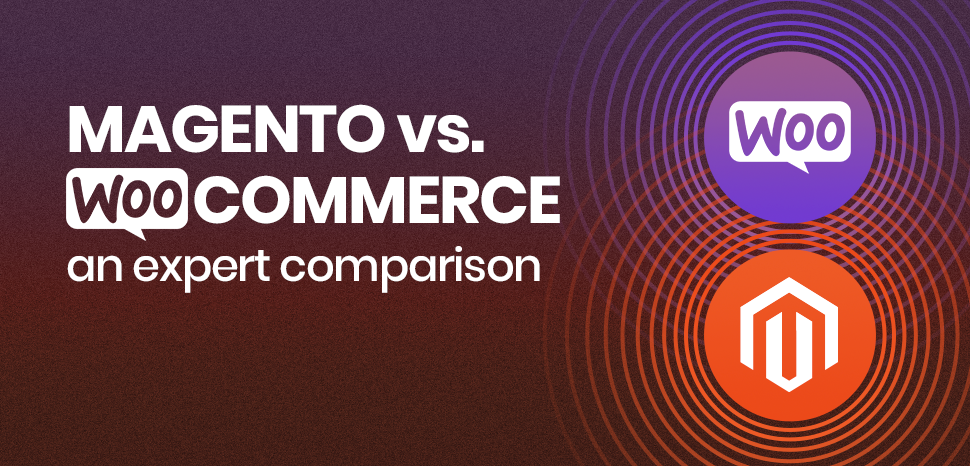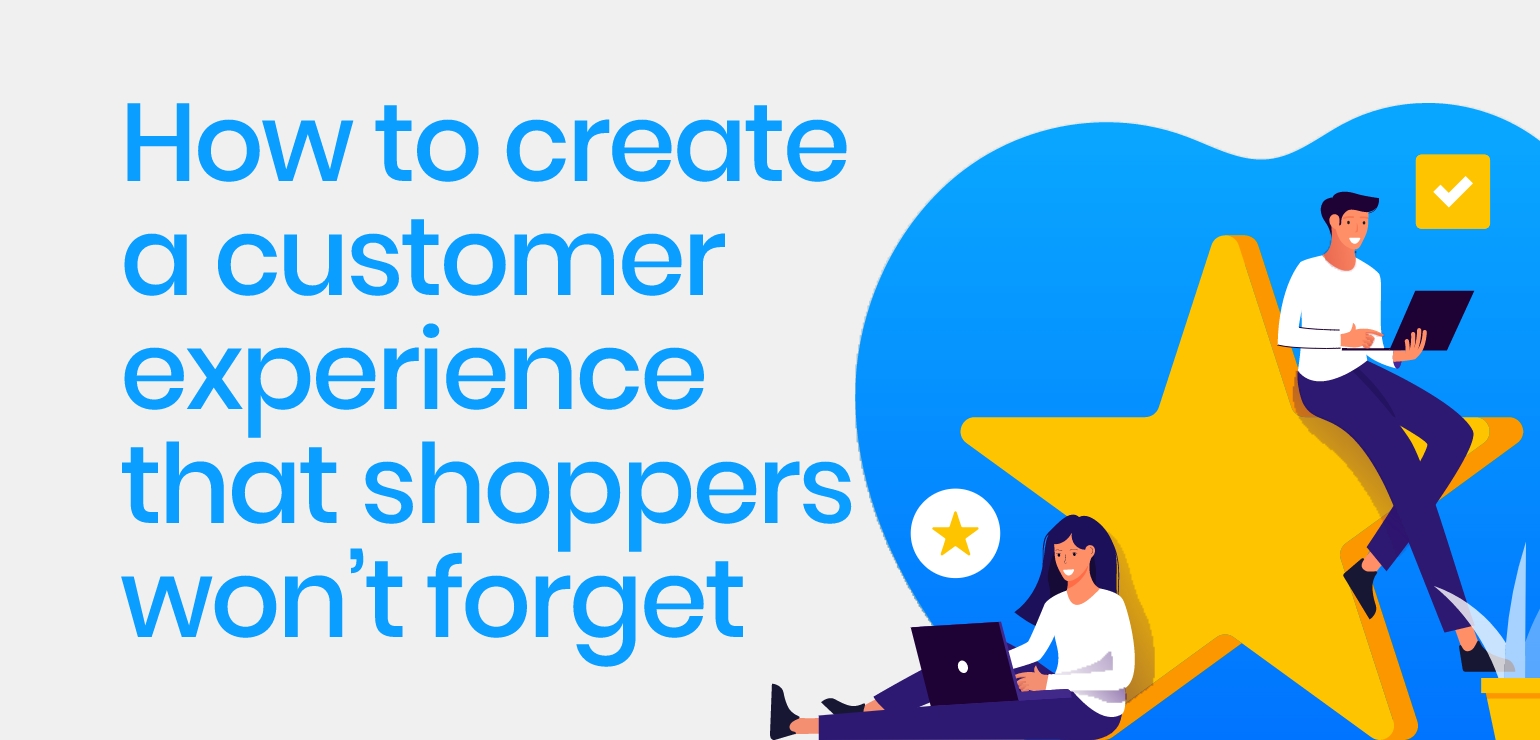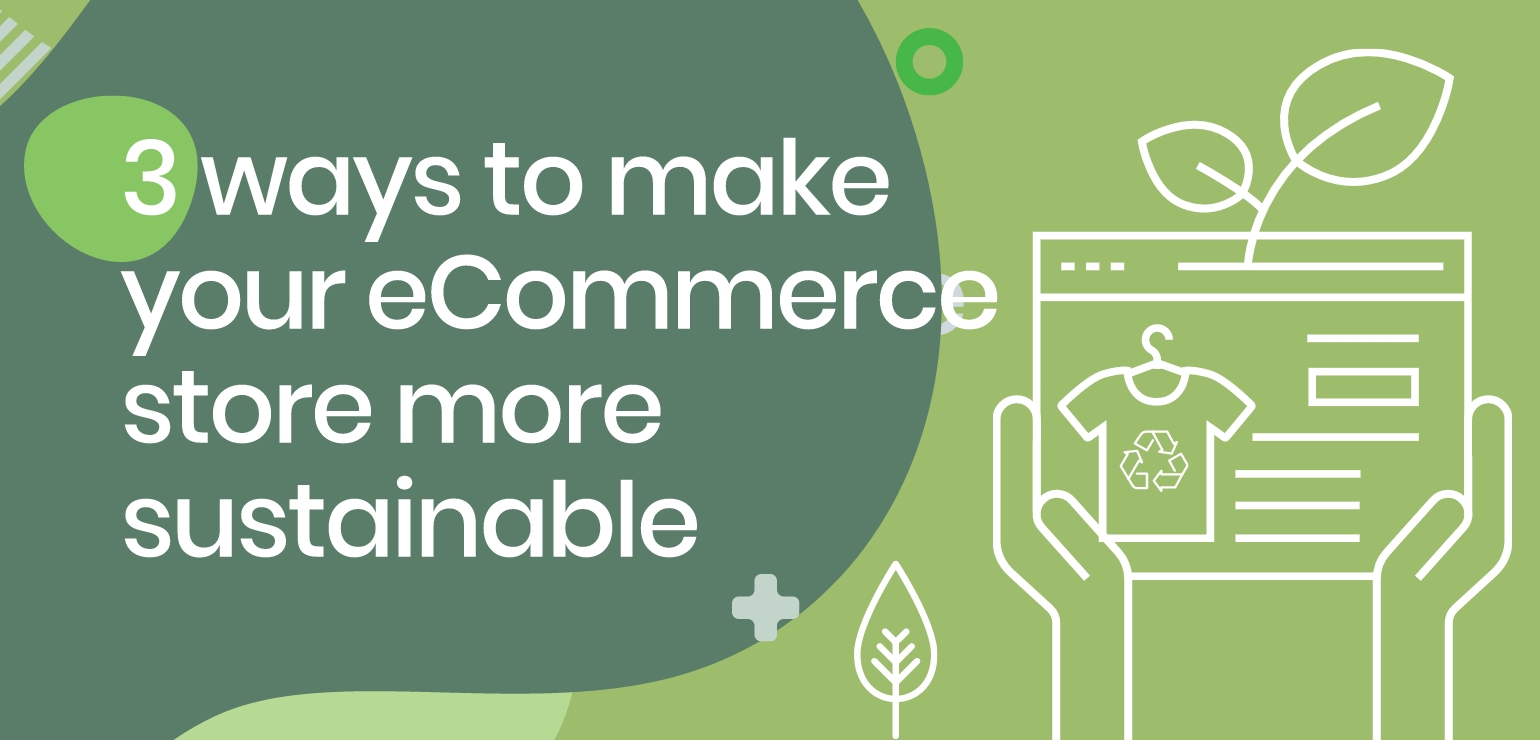Magento vs. WooCommerce – an expert comparison

Article topics
- Magento vs. WooCommerce – an expert comparison
- Magento vs. WooCommerce – pros and cons at a glance
- What exactly are Magento and WooCommerce?
- Design
- Development
- Performance
- WooCommerce features at a glance
- Magento Commerce features at a glance
- Final thought
Magento vs. WooCommerce – an expert comparison
eCommerce success depends on choosing the right platform for your business. This expert WooCommerce vs. Magento comparison will help you decide which platform is better for your business.
One of the most popular eCommerce platforms, with 20% of the top one million webstores, Magento, also known as Magento 2, is an enterprise level platform that has much to offer in terms of bespoke design capability and powerful out-of-the-box features.
Another highly popular eCommerce platform is WooCommerce, a modular, feature rich online store built on WordPress that claims 22% of the top one million webstores.
So, which is better, Magento or WooCommerce?
Every business has different eCommerce needs and goals. What’s important to one business may be less important to another and vice versa, depending on a variety of factors, such as sector, products, brand identity and audience.
This article will take a deeper dive into the Magento vs. WooCommerce question, offering answers to help you make a more informed choice about which platform is best suited to your business.

Magento vs. WooCommerce – pros and cons at a glance
WooCommerce pros
- Fast to get started
- Lower initial cost
- Vast number of themes and plugins
WooCommerce cons
- Not as customisable as Magento
- Cost of additional features can mount up
- Not easy to scale
Magento pros
- Highly customisable
- Highly scalable
- Lots of out-of-the-box features
Magento cons
- Higher initial cost
- Longer development time
- More complex to manage
What exactly are Magento and WooCommerce?
Magento
Magento is offered in two editions: Magento Open Source and Magento Commerce. Both editions offer businesses different eCommerce solutions. Which one is right for a particular business will depend on a range of factors, such as business type and size, and specific business needs and goals.
Magento Open Source
Magento Open Source (OS) is a free and open source eCommerce platform, meaning that developers are able to use its source code to create bespoke design and functionality. This is an ideal option for businesses that want to offer consumers unique shopping experiences.
But this level of customisation is more costly with hosting, ongoing support and maintenance, and has longer development time.
Magento Commerce
Magento Commerce is an enterprise level solution with powerful native capabilities and functionality that are not included with OS, such as content staging and preview, integrated B2B, automated cross-sell/upsell and more.
That means less development time and less initial development cost compared with Magento OS, although with the Commerce edition, extensions and ongoing development make longer term cost comparable. For more powerful out-of-the-box features, choose Magento Commerce.
WooCommerce
WooCommerce is a modular platform built on WordPress, the most popular CMS in the world with more than 60% market share, with almost 25 million live sites, 319,000 of which are in the top one million, powering 38% of all websites.
WooCommerce is a feature rich WordPress plugin for all aspects of your business. And because it’s built on WordPress, WooCommerce can be extended with plugins for additional functionality, from customer acquisition and marketing, to cart and checkout, to analytics and optimisation, and much more.
There is perhaps an implication that because WooCommerce is a WordPress plugin it is in some way limited by the WordPress CMS on which it functions. In actual fact, this is a strength. The popularity of WordPress and WooCommerce attracts developers to create plugins and cultivate a large community that seeks to not only design applications, but to optimise and troubleshoot the platform, providing a solid foundation for WooCommerce webstores.
There is perhaps an implication that because WooCommerce is a WordPress plugin it is in some way limited by the WordPress CMS on which it functions. In actual fact, this is a strength. The popularity of WordPress and WooCommerce attracts developers to create plugins and cultivate a large community that seeks to not only design applications, but to optimise and troubleshoot the platform, providing a solid foundation for WooCommerce online stores.
There are currently 6000+ plugins and extensions for WooCommerce, each offering different designs, features and functionality covering all areas of eCommerce. Some plugins are free, but others will need to be purchased, so this cost should be included in your development budget.
Design
Themes and templates
Both Magento Commerce and WooCommerce offer a wide range of webstore design possibilities using themes and templates. Themes and templates are ready-made design foundations for how your online store will look in terms of graphic design, colour schemes, font types etc., and page layout elements such as menus, search bars, images, CTA buttons and other user interfaces.
Ready-made themes and templates are chosen depending on business type, brand identity and specific business goals to best appeal to and engage your audience, offering outstanding user experiences and more streamlined shopping journeys.

Development
Extensions and plugins
No eCommerce platform will immediately be a perfect fit for your online store. There will always be some level of customisation required, to a greater or lesser degree. Unless your business has its own development capabilities, it makes sense to work with a development partner. This will help to ensure that you are getting the most out of your Magento or WooCommerce webstore, optimising consumer engagement and sales, and maximising your ROI.
Extensions and plugins offer additional functionality in a wide range of areas, including:
- SEO/PPC
- CRM
- Email marketing
- Automation
- Inventory management
- Live chat and chatbot
- Payment gateways
- Localisation
Extensions and plugins also enable back office functionality, including analytics and reporting, accounts, finance, and security. Third party theme and extension providers are also available, such as Template Monster and Theme Forest. And both Magento Commerce and WooCommerce support integrations for UPS, FedEx, Mailchimp, Hootsuite, the list goes on.
Magento Commerce and WooCommerce have extensive themes and extension libraries, with designs to suit any type of business. Magento has its own themes and extensions marketplace, which has all of its offering searchable by keyword, category or price.
WooCommerce also has its own extensive library, which has more themes and templates available than Magento. Because WooCommerce is a WordPress plug-in, any WordPress theme or extension can be used.
Performance
High webstore performance is vital for offering consumers fast, intuitive shopping experiences, which will help optimise conversion and lift customer retention. Perhaps the most important performance element is page load speed—if your webstore pages load too slowly, consumers will become frustrated and navigate away from the page.
There are a variety of things that can impact page loads speed, such as traffic spikes, content delivery network (CDN) not enabled, whether or not content is optimised, and how plugins and extensions are managed, as well as other factors.
Magento Commerce and WooCommerce both have the ability to optimise content, such as compressing and resizing images, using a CDN, and using good content caching extensions or plugins.
Although some of the reasons for slow page load can be attributed to webstore content and functionality, often the main cause is down to hosting. With Magento and WooCommerce it’s important to consider how your webstore will be hosted, whether that’s on a physical server in a data centre or in the cloud using a multiple server, multiple data centre approach, such as AWS for higher redundancy and security.
Both Magento Commerce and WooCommerce can be hosted either on a physical server or in the cloud. Which hosting solution is right for you will depend on your business size, traffic volume, complexity and your specific business needs and goals.

Ease of use
For many businesses a big consideration when choosing an eCommerce platform is how easy it is to use and how much of a learning curve there us. Magento Commerce and WooCommerce are both easy to use and are created for businesses (with perhaps a little training) to easily manage the day to day running of their webstore, as well as capitalising on marketing, reporting and analytics functionality.
But most online businesses don’t have enough inhouse technical and coding knowledge to really get the most out of their Magento or WooCommerce webstore. That’s why it’s so important to work with a Magento or WooCommerce specialist to not only build and develop your webstore, but to also effectively support it into the future.
This will leave you free to do what you do best—build and grow your brand and business without getting bogged down in your webstore’s backend development or routine maintenance.

Security
A recent study revealed that over 30,000 websites (including eCommerce) are hacked every day. Ensuring that your webstore and business are protected against security threats, to your webstore operation and revenue, and data security, such as your customers’ personal information and payment details, is vital for ongoing eCommerce success.
WooCommerce
WooCommerce security is implemented using dedicated plugins that actively monitor your webstore for a variety of threats, such as malware, data breaches, denial of service (DDoS), ransomware and more.
There are many security plugins available for WooCommerce and they usually come at additional cost, although there are some that are free. Popular WooCommerce security plugins include: Sucuri, Security Ninja and Astra Web.
Magento
Magento provides more comprehensive security support compared with WooCommerce. Magento releases security patches to maintain existing protection and to address new and evolving security threats. Patches are often released to target specific threats before they become critical or widespread.
Although Magento security patches are issued free of charge, there is often a cost associated with implementing them.
WooCommerce features at a glance:
- Built on WordPress CMS
- Modular and open source architecture
- Potentially low-cost initial development and fast time to market
- Highly flexible and scalable
- Comprehensive SEO and email marketing
- Chatbot
- Detailed analytics and reporting
- Dashboards
- 6000+ plugins and extensions
- Over 100 payment gateways
- Mobile-friendly shopping
- Multiple shipping methods with configurable shipping zones and shipping classes
- An intuitive backend for stock management, refunds and order management
- Third party integrations and extensions for marketing, payment methods, order fulfilment, analytics, social media automation and more
- Translation and localisation
- Unlimited products
- Multiple store inventories
- B2C, D2C and B2B
- Omnichannel capability
- Insights and blog
- Well established platform with forecast growth for the next 12 years
Magento Commerce features at a glance:
- Powerful out-of-the-box features and open source
- Customer segmentation and personalisation
- Dynamic rule-based product relations
- Instant purchase (one-click checkout)
- Content staging and preview
- Visual merchandising
- Elasticsearch
- Responsive themes
- Integrated B2B functionality
- Managed cloud solution
- SEO tools
- Promotional pricing across stores, categories, products and segments
- Multiple stores with single source of truth
- Guest checkout option
- Secure payments
- Real-time shipping rates
- Order tracking
- Returns authorisation management
- Issue store credit
- Advanced analytics and reporting
- Higher performance and scalability using Varnish
- Minify code and compress images for faster page load
Final thought
WooCommerce is a flexible platform with the potential to be the right fit for any size or type of business thanks to its modular and open source architecture. This gives WooCommerce the scope to go from independent trader to enterprise level business.
Magento Commerce is ideal for SMB level up to global, multi-site operations. It’s powerful native features and scalability means that it can easily grow and evolve with your business as marketplaces and consumer expectations shift.
Costs for both Magento Commerce and WooCommerce vary. The key takeaway here is that a WooCommerce store has a lower initial cost, but costs could rise as your webstore develops. And although Magento has higher initial cost, it has many out-of-the-box features are there from the beginning.
And remember, how you choose to host your online store will significantly impact development and ongoing cost too.
The key to choosing the right platform is to have a detailed eCommerce plan and a clear growth strategy. If you have that in place from the outset, making the right choices will be much clearer for you and your development partner.
If you would like to know more about Magento or WooCommerce and which one will be the best fit for your business, then get in touch today for a chat with one of our platform agnostic eCommerce experts.


 Back
Back
